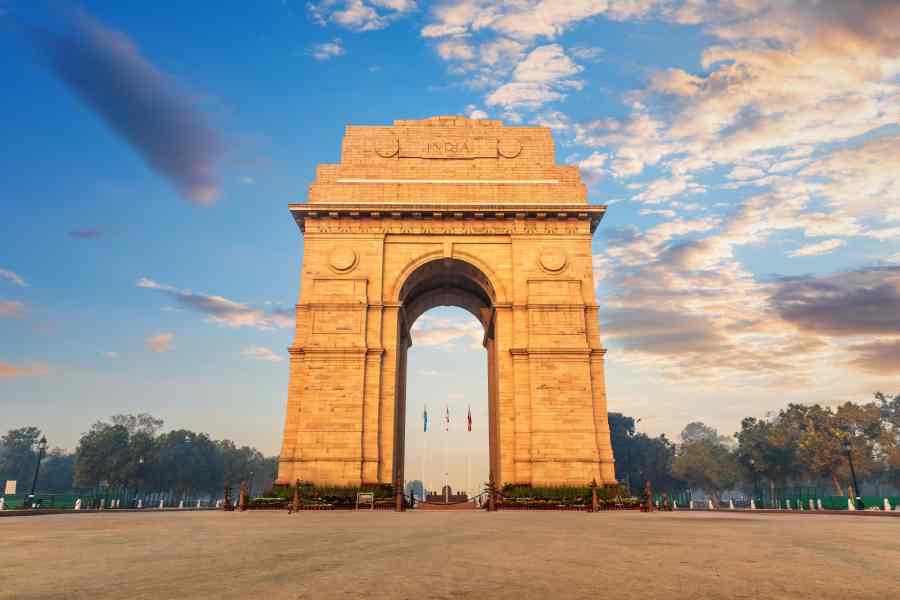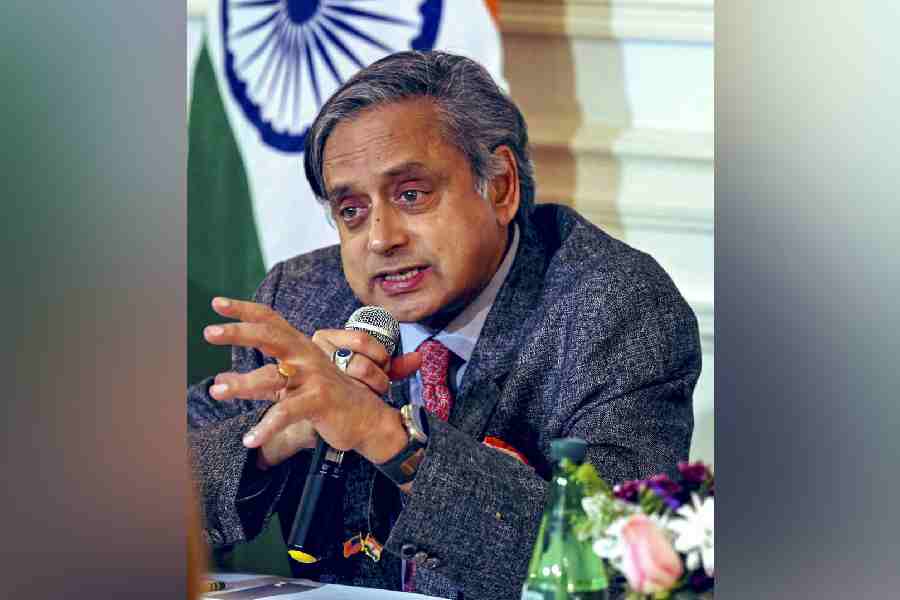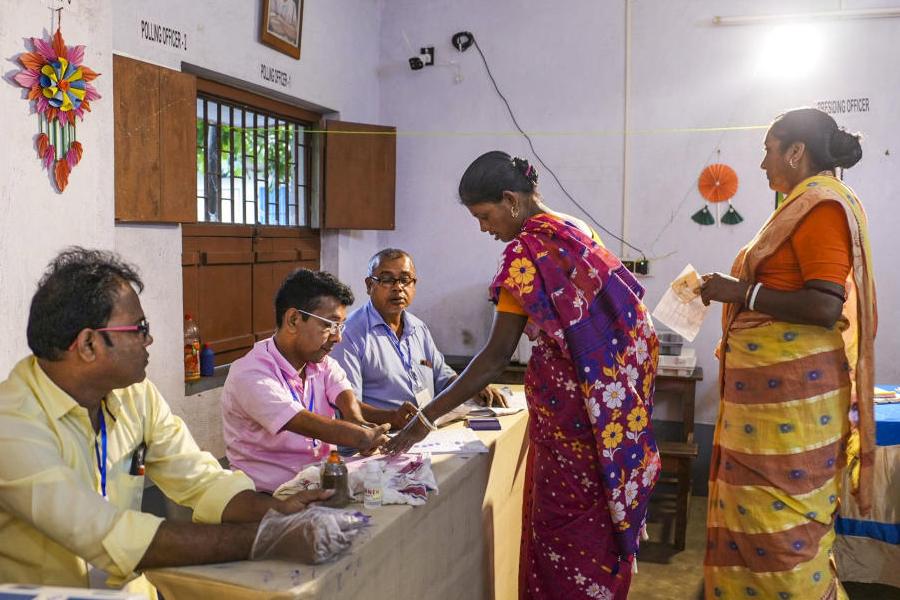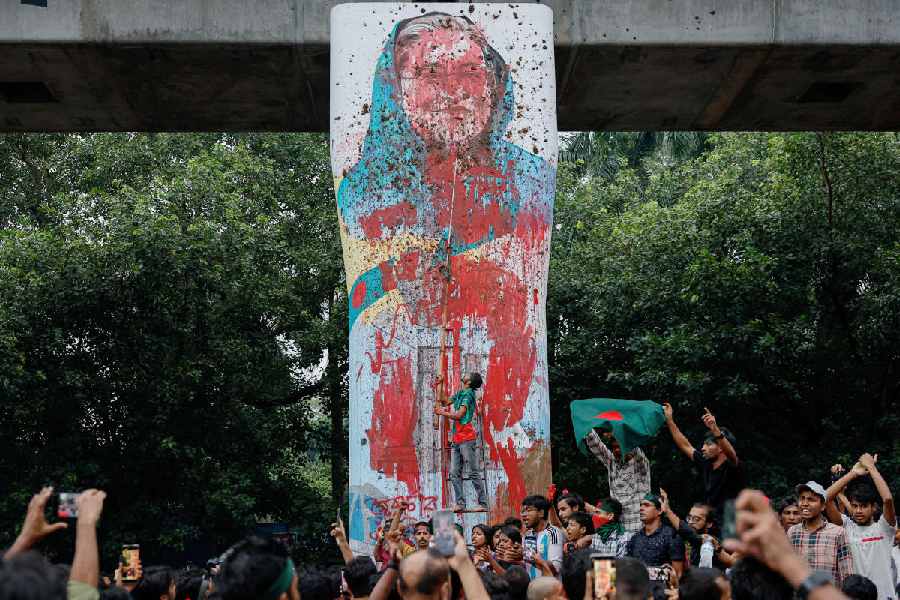 |
Among the various theatrical approaches to Tagore during the sesquicentenary festivities, most of which fall conventionally under directorial interpretations of his dramatic texts or new dramatized versions of his prose or poetry, I shall discuss here two lavish and arresting examples of a third, more recent trend: fresh compositions based on his plays. These face the greatest resistance from conservative audiences who, mistaking them for the Tagore originals, criticize them as un-Tagorean. But the authors have deliberately reworked Tagore, so they have no obligation of fidelity to him, just as Vishal Bhardwaj had no such obligation to Shakespeare for Maqbool and Omkara. These scripts need evaluation on their own terms — like Swapna Sandhani’s Natirpuja, written by Ujjwal Chattopadhyay, and Rangakarmee’s Shyamar Udal, devised collaboratively from a basic scenario by Debasish Majumdar.
Having said that, one must at the same time ask, what do they add to their sources? Tagore’s Natir Puja was pioneering for a reason not yet adequately recognized: he composed it in 1926 exclusively for actresses; the first edition did not have a single male character. How many dramatists in the world, leave alone India, had thought of such a ‘feminist’ concept then? (Of course, Tagore himself had written the much lighter Lakshmir Pariksha in 1897.) It still makes a major statement for women in theatre if a group stages it today, which they rarely do. Chattopadhyay squanders that advantage by deleting four princesses and a confidante, replaced with a narrator and four males (including Raja Ajatasatru and a counsellor), to show Hindu patriarchy suppressing Buddhism. They do not kill Srimati in the end but keep her alive, to suit director Koushik Sen’s dedication of the production to Irom Sharmila on the 10th anniversary of her fast against the Armed Forces (Special Powers) Act. This innovative conclusion startles with its political immediacy, but an all-women cast would, in fact, have perfectly fitted the Manipuri women’s protest movement.
For Shyamar Udal, guest director Syed Jamil Ahmed creates a performance text collating passages from Tagore’s poem Parishodh, the natya-giti Parishodh and the dance-drama Shyama, plus songs and excerpts from elsewhere (for instance, it begins with “Mahabiswe mahakashe” and ends with “Anandadhara bahichhe bhubane”). Consequently, it is entirely Tagorean, but sometimes the previous associations of certain portions rub against the grain, as when the dacoits echo lines from Birpurush. Overall, however, Ahmed has successfully presented his theme of a cosmic order within which the personal relationships of petty mortals seem simultaneously insignificant and predestined, sublimating the human errors, wrongs and requitals that concerned Tagore, coming closer in a sense to Tagore’s Buddhist inspiration, the Mahavastu Avadana, which explicates the story metaphysically as “why Buddha abandoned Yasodhara”.
From woman’s devotion politicized to woman’s love transcended. In the former performance, Sen’s vision underlines the intolerance of those who wield power, outwardly highlighted by their bestial helmets designed by Reshmi Sen and their brutal assault on the bhikshuni Utpalparna, but best portrayed by the flaring hatred of princess Ratnabali (Titas Bhowmik) for Srimati (Arpita Chatterjee). Unlike most filmstars who occasionally visit the stage, Chatterjee does not stick out conspicuously, blending into her role’s initial humility and rising to a final dignified defiance of the ruler’s humiliating command.
In the other production, an interculturally accomplished professor from the Theatre Department of the University of Dhaka directing a team of young Calcuttans itself marks a milestone, giving them training in the strenuous physical ensemble style of the best Bangladeshi, and indeed international, theatre. They all act, dance and sing, unlike our old-fashioned separation of these modes. The splitting of Shyama into three (picture) reflects the three Tagore texts in which she appears, but their individual performative functions remain uneven, for while Madhumita Paul’s strong presence and delivery balance Sanjita Mukherjee’s accurate singing, Arpita Biswas has comparatively less to do.
Much expense has gone into the forbidding set that suggests the original locale on the ghats of Varanasi, nevertheless one heartily welcomes the design debut of Kamal Saha (better known as a theatre archivist). The complicated collective choreography by Ronnie Ghosh and Mitul Sengupta both impresses and expresses — as in the charming sequence on the river. The fully live music by Murari Roychowdhury and Tapati Bindu strikes us by its foreboding emphasis on percussion and rejection of melodic instruments except one violin, challenging the singers to hold their scales. Niloy Sengupta’s imaginative costumes vary a basic red motif signifying passion. Every department, therefore, displays encouraging signs of adventurous experimentation so often lacking in Bengali theatre, guaranteed to stimulate spectators.










